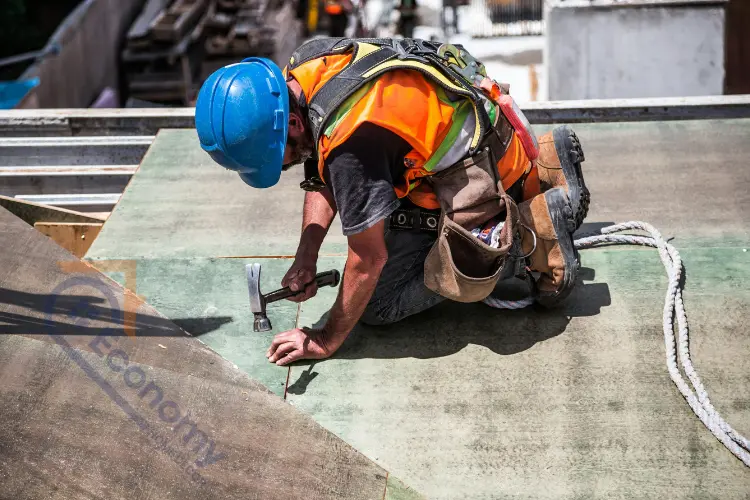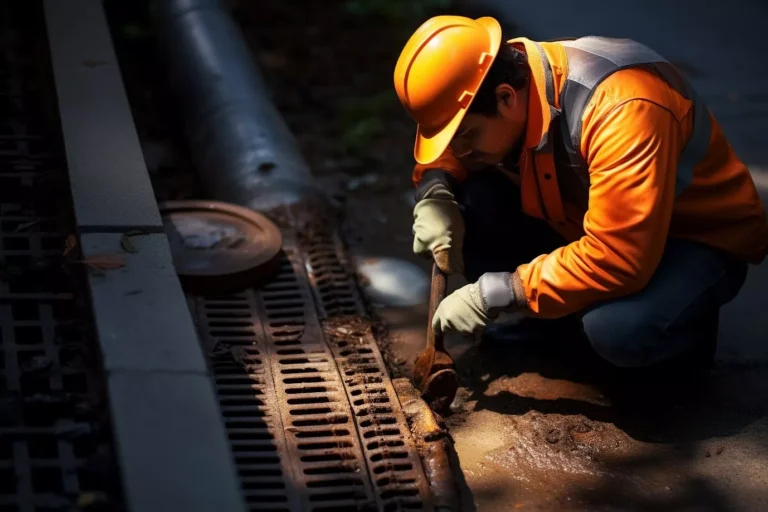When it comes to roofing projects, having the right tools can make the difference between a professional-looking job and a frustrating experience. Among all the specialized tools available to roofers, the shingling hammer stands out as an essential piece of equipment that’s specifically designed for roofing work. Understanding why is a shingling hammer ideal for roofing work helps both professional contractors and DIY enthusiasts make informed decisions about their tool selection.
A shingling hammer, also known as a roofing hatchet, is a specialized tool that combines multiple functions into one compact design. Unlike regular hammers, these tools are engineered specifically for the unique demands of roofing work, from installing shingles to making precise cuts and adjustments. The design has been refined over decades to address the specific challenges that roofers face when working on steep slopes, handling different materials, and maintaining efficiency throughout long workdays.
Key Takeaways
- Shingling hammers are specifically designed for roofing work with unique features like adjustable gauges and sharp edges
- The lightweight design reduces fatigue during extended roofing projects
- Built-in measuring tools help ensure consistent shingle placement and professional results
- The hatchet blade allows for quick cutting and trimming of shingles without additional tools
- Magnetic nail holders speed up the installation process significantly
- Weather-resistant construction ensures durability in harsh outdoor conditions
What Makes A Shingling Hammer Different From Regular Hammers?
The fundamental difference between a shingling hammer and a regular carpenter’s hammer lies in its specialized design features. While a standard hammer is built for general construction tasks, a shingling hammer is specifically engineered for roofing applications. The head typically weighs between 12 to 16 ounces, which is lighter than most framing hammers but heavier than finish hammers, providing the perfect balance for roofing work.
The most distinctive feature is the combination of a hammer head on one side and a sharp hatchet blade on the other. This dual-purpose design eliminates the need to carry multiple tools while working on the roof. The hatchet blade is razor-sharp and designed to cut through asphalt shingles, wood shakes, and other roofing materials with precision. Additionally, many shingling hammers feature a magnetic nail holder that securely grips roofing nails, allowing for one-handed operation that’s crucial when working on steep roof surfaces.
The handle design also differs significantly from regular hammers. Shingling hammer handles are typically shorter and feature enhanced grip patterns that prevent slipping even when hands are wet or wearing gloves. The weight distribution is carefully calculated to reduce wrist strain during repetitive nailing motions, which is essential for professional roofers who may drive hundreds of nails per day.
Essential Design Features That Make Shingling Hammers Perfect For Roofing
Understanding why is a shingling hammer ideal for roofing work requires examining its specific design elements. The adjustable gauge is perhaps the most innovative feature, allowing roofers to set consistent exposure measurements for shingles. This gauge slides along the hammer head and locks into position, ensuring that each shingle is placed at exactly the right distance from the previous row. This feature alone can save hours of measuring time on large roofing projects.
The face pattern of the hammer head is another crucial design element. Unlike smooth-faced hammers, shingling hammers often feature a milled or textured face that provides better grip on nail heads, reducing the chance of slipping and creating unsightly hammer marks on the roofing material. The size of the face is optimized for roofing nails, which are typically smaller than framing nails but require precise placement.
| Feature | Benefit | Impact on Roofing Work |
|---|---|---|
| Adjustable Gauge | Consistent shingle placement | Faster installation, professional appearance |
| Magnetic Nail Holder | One-handed operation | Improved safety on steep roofs |
| Sharp Hatchet Blade | Precise cutting capability | No need for additional cutting tools |
| Lightweight Design | Reduced fatigue | Longer working periods without strain |
| Textured Face | Better nail grip | Fewer missed strikes, cleaner installation |
The weight distribution is carefully engineered to provide maximum striking force with minimal effort. The center of gravity is positioned to naturally align with the striking motion, reducing the energy required for each nail drive. This seemingly small detail becomes incredibly important during long roofing projects where hundreds or thousands of nails must be driven.
The Importance Of Weight And Balance In Roofing Tools
When considering why is a shingling hammer ideal for roofing work, the weight and balance characteristics play a crucial role in both performance and user comfort. The typical weight range of 12-16 ounces represents the sweet spot for roofing applications. This weight provides enough momentum to drive nails effectively while remaining light enough to prevent excessive fatigue during extended use.
The balance point of a shingling hammer is positioned closer to the head than in general-purpose hammers. This forward balance helps with accuracy and reduces the effort required to control the tool during overhead work, which is common in roofing applications. The shorter handle length, typically 12-14 inches, contributes to better control and maneuverability in tight spaces around roof features like chimneys, vents, and dormers.
Professional roofers often work 8-12 hour days, making thousands of hammer strikes. The cumulative effect of using a poorly balanced tool can lead to fatigue, reduced accuracy, and even repetitive strain injuries. The specialized design of shingling hammers addresses these concerns by optimizing the relationship between weight, balance, and ergonomics specifically for roofing work.
How Weight Distribution Affects Performance
The physics of hammer design directly impacts performance in roofing applications. A properly balanced shingling hammer transfers energy more efficiently from the user’s swing to the nail head. This efficiency means less effort is required for each strike, and nails are driven home more consistently. The reduced effort also translates to better accuracy, which is essential when working with expensive roofing materials where mistakes can be costly.
Built-In Measuring Tools And Gauges
One of the most compelling reasons why is a shingling hammer ideal for roofing work is the integration of measuring tools directly into the hammer design. The adjustable gauge system allows roofers to set precise measurements for shingle exposure, which is critical for both appearance and weatherproofing. Traditional methods of measuring shingle exposure involve separate measuring tools, chalk lines, or constant reference to a ruler, all of which slow down the installation process.
The gauge mechanism typically consists of a sliding scale that locks into position at the desired measurement. Common settings include 5 inches, 5.5 inches, and 6 inches, which correspond to standard shingle exposure measurements. Some premium models feature multiple gauge positions and even include metrics for different shingle types and installation methods.
Professional roofers appreciate the consistency that built-in gauges provide. When installing hundreds of shingles, even small variations in exposure can create visible lines or patterns that detract from the roof’s appearance. The gauge ensures that each shingle is positioned identically to the previous one, creating perfectly straight lines and professional-looking results.
Accuracy Benefits Of Integrated Measuring Systems
The accuracy provided by built-in measuring systems extends beyond just appearance. Proper shingle exposure is crucial for weather resistance and longevity. Too much exposure can allow water to penetrate beneath shingles, while too little exposure can create unnecessary weight and potential drainage issues. The consistent measurements provided by shingling hammer gauges help ensure that the roof performs as designed over its entire lifespan.
Magnetic Nail Holders: A Game-Changer For Efficiency
The magnetic nail holder feature represents one of the most significant innovations in shingling hammer design. This feature addresses a fundamental challenge in roofing work: safely and efficiently handling nails while working on steep, potentially slippery surfaces. Understanding why is a shingling hammer ideal for roofing work becomes clear when you consider the safety and efficiency benefits of magnetic nail holders.
The magnetic system typically uses a strong rare-earth magnet positioned on the hammer head to securely hold roofing nails. This allows roofers to position nails with one hand while maintaining their grip on the roof with the other. The magnetic force is calibrated to hold nails securely during positioning but release them cleanly when struck. This balance requires precise engineering to ensure reliable performance across different nail types and working conditions.
Professional roofers report significant time savings when using hammers with magnetic nail holders. The ability to work one-handed is particularly valuable when working on steep pitches or in awkward positions around roof features. The magnetic system also reduces the number of dropped nails, which can be both costly and dangerous on job sites.
Safety Benefits Of Magnetic Nail Systems
Safety is paramount in roofing work, and magnetic nail holders contribute significantly to safer working conditions. By eliminating the need to fumble with loose nails, roofers can maintain better balance and control while working on roofs. The reduced risk of dropping nails also protects people and property below the work area. Additionally, the one-handed operation capability allows roofers to maintain a secure grip on safety equipment or roof features while working.
The Hatchet Blade: Cutting Capabilities For Roofing Materials
The sharp hatchet blade on the opposite side of the hammer head is another feature that demonstrates why is a shingling hammer ideal for roofing work. This blade is specifically designed to cut through various roofing materials, including asphalt shingles, wood shakes, and even thin metal roofing components. The blade geometry is optimized for clean, precise cuts that don’t damage surrounding materials.
The cutting edge is typically hardened and sharpened to maintain its effectiveness through thousands of cuts. The blade angle is designed to provide both precision and durability, allowing for detailed trimming work around roof features as well as general cutting tasks. Many professional roofers appreciate having this cutting capability integrated into their primary tool, eliminating the need to constantly switch between different tools.
The hatchet blade also serves as a prying tool for removing old shingles or making adjustments to existing roofing materials. This versatility makes the shingling hammer an invaluable tool for both new construction and roof repair work. The blade’s position on the hammer head allows for precise control and leverage when making cuts or adjustments.
Blade Maintenance And Longevity
Proper maintenance of the hatchet blade is essential for optimal performance. Regular sharpening ensures clean cuts and reduces the effort required for cutting tasks. Most shingling hammers are designed to allow for easy blade sharpening or replacement when necessary. The hardened steel construction of quality blades provides excellent durability, but like all cutting tools, they require periodic maintenance to perform at their best.
Handle Design And Ergonomics For Roof Work
The handle design of a shingling hammer is specifically engineered for the unique demands of roofing work. Unlike general-purpose hammers, shingling hammer handles are optimized for extended use in challenging positions and weather conditions. The handle length, typically 12-14 inches, provides the right balance between control and leverage for roofing applications.
The grip pattern is another critical design element. Most shingling hammers feature textured or contoured grips that prevent slipping even when hands are wet or wearing gloves. The grip material is selected for durability and comfort, often featuring synthetic materials that resist weather and wear. Some handles include shock-absorbing elements that reduce vibration transmission to the user’s hand and arm.
The handle shape is designed to fit comfortably in the hand while providing secure control during overhead work. The ergonomic design helps prevent hand fatigue and reduces the risk of repetitive strain injuries that can affect roofers who use hammers extensively. The connection between the handle and head is reinforced to withstand the stresses of roofing work, including the lateral forces applied during cutting and prying operations.
Weather Resistance And Durability
Roofing work exposes tools to harsh weather conditions, including rain, snow, extreme temperatures, and UV radiation. Shingling hammer handles are designed to withstand these conditions without degrading or becoming unsafe. The materials used in handle construction are selected for their resistance to moisture, temperature fluctuations, and UV exposure. This durability ensures that the tool remains reliable and safe throughout its service life.
Material Compatibility: Working With Different Roofing Materials
Understanding why is a shingling hammer ideal for roofing work requires examining its compatibility with various roofing materials. Modern roofing projects involve a wide range of materials, each with specific installation requirements and challenges. Shingling hammers are designed to work effectively with the most common roofing materials, including asphalt shingles, wood shakes, slate, and metal roofing components.
Asphalt shingles are the most common roofing material in residential construction, and shingling hammers are specifically optimized for their installation. The hammer face size and texture are designed to drive roofing nails through asphalt shingles without damaging the material. The hatchet blade cuts cleanly through asphalt shingles, creating precise edges that maintain the integrity of the weather seal.
Wood shakes and shingles present different challenges, requiring clean cuts and precise nail placement to prevent splitting. The sharp hatchet blade of a shingling hammer can make detailed cuts in wood materials, while the hammer head drives nails without causing damage to the surrounding wood. The gauge system is particularly valuable when installing wood shingles, as consistent exposure is crucial for proper drainage and appearance.
Slate and tile roofing materials require specialized techniques and careful handling. While not all shingling hammers are suitable for slate work, many models can handle the installation of slate and tile materials when equipped with appropriate nails and used with proper techniques. The precision offered by shingling hammers is valuable when working with these expensive and delicate materials.
Nail Compatibility And Performance
Different roofing materials require specific nail types and installation techniques. Shingling hammers are designed to work with the full range of roofing nails, from standard galvanized nails to specialized stainless steel and copper nails used with premium roofing materials. The magnetic nail holder system is calibrated to work with various nail sizes and materials, ensuring reliable performance across different applications.
Safety Benefits Of Using Specialized Roofing Tools
Safety is a primary concern in roofing work, and using the right tools plays a crucial role in preventing accidents and injuries. Understanding why is a shingling hammer ideal for roofing work includes recognizing the safety benefits it provides over generic tools. The specialized design features of shingling hammers contribute to safer working conditions in several important ways.
The magnetic nail holder significantly reduces the risk of dropping nails, which can be dangerous for people below and can damage property. The one-handed operation capability allows roofers to maintain better balance and control while working on steep surfaces. The lightweight design reduces fatigue, which is a major contributor to accidents in roofing work. Tired workers are more likely to make mistakes, lose their balance, or use improper techniques.
The ergonomic handle design helps prevent repetitive strain injuries that can affect roofers who use hammers extensively. The shock-absorbing properties of quality handles reduce vibration transmission, protecting the user’s joints and muscles. The secure grip patterns prevent the tool from slipping out of the user’s hand, even in wet conditions or when wearing gloves.
Reducing Common Roofing Accidents
Statistics show that falls are the leading cause of injuries in roofing work, and many falls occur when workers lose their balance while reaching for tools or materials. The integrated features of shingling hammers help reduce these risks by minimizing the need to carry multiple tools and by providing better control during use. The consistency and efficiency provided by shingling hammers also help reduce the time spent on roofs, which inherently reduces exposure to fall risks.
Professional Roofer Preferences And Recommendations
Professional roofers who have used various hammer types consistently prefer shingling hammers for roofing work. Industry surveys and professional feedback highlight several key reasons why is a shingling hammer ideal for roofing work from the perspective of experienced contractors. The time savings alone can justify the investment in specialized tools, particularly for contractors who complete multiple roofing projects per year.
Productivity benefits are among the most commonly cited advantages. Professional roofers report that shingling hammers can increase installation speed by 20-30% compared to using generic hammers and separate measuring tools. This efficiency translates directly to increased profitability for contractors and faster project completion for customers. The consistency provided by built-in gauges also reduces callbacks and warranty issues related to improper installation.
Quality of work is another significant factor. Professional roofers take pride in their craftsmanship, and the precision offered by shingling hammers helps ensure that every project meets high standards. The consistent shingle exposure, clean cuts, and professional appearance achieved with specialized tools contribute to customer satisfaction and positive referrals.
Durability and longevity are important considerations for professional tools. Quality shingling hammers are designed to withstand the demanding conditions of professional roofing work, including exposure to weather, frequent use, and the rough handling that occurs on job sites. Many professional roofers report using the same shingling hammer for years or even decades with proper maintenance.
Cost-Benefit Analysis For Professional Use
The initial cost of a quality shingling hammer may be higher than a generic hammer, but the long-term benefits far outweigh the investment. Professional roofers calculate the return on investment based on time savings, improved quality, reduced callbacks, and tool longevity. Most professionals find that a quality shingling hammer pays for itself within the first few roofing projects through improved efficiency and reduced labor costs.
Comparison With Other Roofing Tools
To fully understand why is a shingling hammer ideal for roofing work, it’s helpful to compare it with other tools commonly used in roofing applications. While various tools can be used for roofing work, the shingling hammer offers unique advantages that make it the preferred choice for most applications.
Standard framing hammers are heavier and lack the specialized features needed for roofing work. While they can drive nails effectively, they don’t offer the precision, measuring capabilities, or cutting functions of shingling hammers. The additional weight leads to faster fatigue, and the lack of integrated measuring tools slows down the installation process.
Finish hammers are lighter but lack the striking power needed for roofing nails and don’t include the cutting capabilities essential for roofing work. They also lack the magnetic nail holders and measuring gauges that make shingling hammers so effective for roofing applications.
Roofing nailers (pneumatic or cordless) offer speed advantages for large projects but lack the precision and versatility of shingling hammers. Nailers are excellent for production work but can’t handle the detailed work around roof features or the cutting and trimming tasks that are part of most roofing projects.
| Tool Type | Advantages | Disadvantages | Best Use Case |
|---|---|---|---|
| Shingling Hammer | Versatile, precise, integrated features | Manual operation | General roofing, detail work |
| Framing Hammer | Powerful, durable | Heavy, lacks roofing features | Structural work only |
| Finish Hammer | Lightweight, precise | Lacks power and cutting capability | Trim work only |
| Roofing Nailer | Fast, consistent | Expensive, limited versatility | Large production projects |
When To Choose Shingling Hammers Over Alternatives
Shingling hammers are the ideal choice for most roofing applications, particularly projects that require precision, versatility, and attention to detail. They excel in residential roofing, repair work, and situations where multiple tasks must be performed with a single tool. The combination of features makes them particularly valuable for contractors who work on a variety of roofing projects and need tools that can adapt to different requirements.
Maintenance And Care For Shingling Hammers
Proper maintenance is essential to ensure that a shingling hammer continues to perform optimally throughout its service life. Understanding why is a shingling hammer ideal for roofing work includes knowing how to maintain these specialized tools properly. Regular maintenance not only extends tool life but also ensures consistent performance and safety.
Daily maintenance should include cleaning the hammer head and handle to remove debris, moisture, and roofing material residue. The magnetic nail holder should be checked for proper function and cleaned if necessary. The hatchet blade should be inspected for damage or dullness, and the handle should be checked for cracks or loose connections.
Weekly maintenance for frequently used tools should include a more thorough inspection of all components. The gauge mechanism should be tested for smooth operation and accuracy. The handle grip should be cleaned and inspected for wear. Any signs of damage or wear should be addressed promptly to prevent tool failure or safety issues.
Seasonal maintenance should include complete disassembly if possible, thorough cleaning, and replacement of any worn components. The hatchet blade should be professionally sharpened or replaced if necessary. The magnetic system should be tested with various nail types to ensure proper function. All moving parts should be lubricated according to manufacturer specifications.
Common Maintenance Issues And Solutions
The most common maintenance issues with shingling hammers include blade dullness, magnetic system problems, and handle wear. Blade dullness can be addressed through regular sharpening or blade replacement. Magnetic system problems often result from debris accumulation and can usually be resolved through cleaning. Handle wear may require grip replacement or, in severe cases, complete handle replacement.
Cost Analysis: Investment Value Of Shingling Hammers
When considering why is a shingling hammer ideal for roofing work, the cost-benefit analysis reveals significant value for both professional and DIY applications. While the initial investment in a quality shingling hammer may be higher than a generic hammer, the long-term benefits justify the expense through improved efficiency, better results, and reduced tool replacement costs.
Professional contractors typically see return on investment within the first few projects through increased productivity and improved quality. The time savings alone can amount to several hours per roofing project, which translates directly to increased profitability. The consistency and precision provided by shingling hammers also reduce callbacks and warranty issues, further improving the cost-benefit equation.
DIY homeowners benefit from the improved results and reduced frustration that come with using the right tool for the job. While the frequency of use may be lower than professional applications, the quality of results and ease of use make shingling hammers a worthwhile investment for anyone planning to do their own roofing work.
Tool longevity is another important factor in the cost analysis. Quality shingling hammers are designed to last for years or even decades with proper maintenance. This durability means that the per-use cost decreases significantly over time, making the initial investment more attractive.
Comparing Costs Across Different Quality Levels
Shingling hammers are available at various price points, from basic models suitable for occasional use to premium professional-grade tools. The key is matching the tool quality to the intended use. Professional contractors typically benefit from investing in higher-quality tools that offer better durability and performance features, while DIY users may find that mid-range models provide an excellent balance of features and value.
Frequently Asked Questions
Q: What’s the main difference between a shingling hammer and a regular hammer?
A: The main differences include the built-in measuring gauge, magnetic nail holder, sharp hatchet blade on the opposite side, and optimized weight distribution specifically for roofing work. These features make shingling hammers much more efficient and precise for roofing applications.
Q: Can I use a shingling hammer for other construction tasks?
A: While shingling hammers are optimized for roofing work, they can be used for other light construction tasks. However, their specialized features and lighter weight make them less suitable for heavy framing or demolition work compared to dedicated tools for those applications.
Q: How do I maintain the magnetic nail holder?
A: Keep the magnetic area clean and free from debris. Wipe it down regularly during use and check that it holds nails securely. If the magnetic strength decreases, the magnet may need replacement, which is usually a simple process.
Q: What weight shingling hammer should I choose?
A: Most users find 12-16 ounce hammers ideal for roofing work. Lighter hammers (12-14 oz) are better for extended use and reduce fatigue, while heavier hammers (14-16 oz) provide more striking power for harder materials.
Q: How often should I sharpen the hatchet blade?
A: The frequency depends on usage, but most professionals sharpen the blade every few weeks of regular use. A dull blade requires more effort and produces ragged cuts, so maintaining sharpness is important for both efficiency and quality.
Q: Are expensive shingling hammers worth the investment?
A: For professional use, higher-quality hammers typically offer better durability, more precise gauges, and superior balance, making them worth the investment. DIY users may find mid-range models provide excellent value without the premium features needed for daily professional use.
Conclusion
Understanding why is a shingling hammer ideal for roofing work reveals the thoughtful engineering and specialized design that goes into these essential tools. From the integrated measuring gauges that ensure consistent shingle placement to the magnetic nail holders that improve safety and efficiency, every feature is designed to address the specific challenges of roofing work.
The combination of cutting capability, precise measuring tools, and optimized weight distribution makes shingling hammers far superior to generic hammers for roofing applications. Professional roofers consistently choose these specialized tools because they improve productivity, enhance quality, and reduce fatigue during long workdays. DIY homeowners benefit from the same advantages, achieving professional-looking results with greater ease and consistency.
The investment in a quality shingling hammer pays dividends through improved efficiency, better results, and reduced frustration. Whether you’re a professional contractor looking to improve your productivity or a homeowner planning a DIY roofing project, a shingling hammer is an essential tool that will make your work easier, safer, and more professional. The specialized features that make shingling hammers ideal for roofing work represent decades of tool evolution and refinement, resulting in tools that are perfectly suited to their intended purpose.







